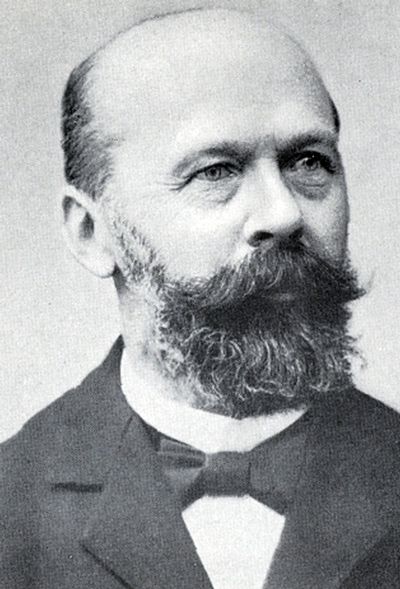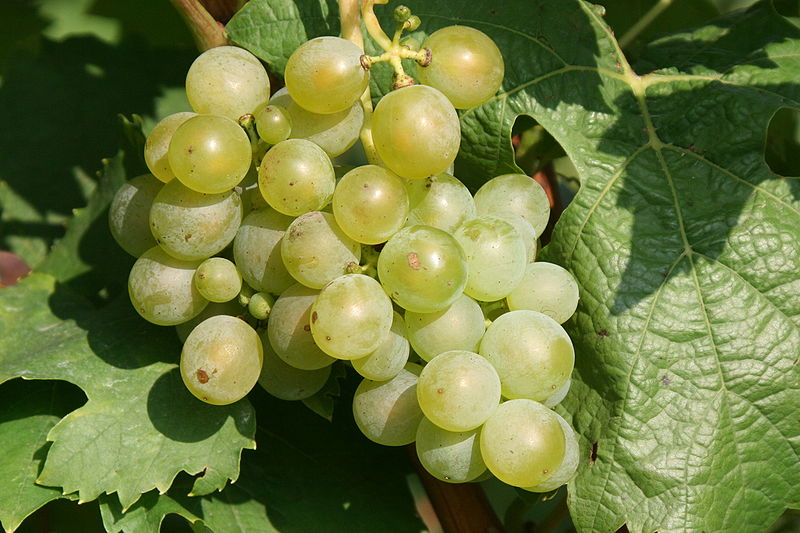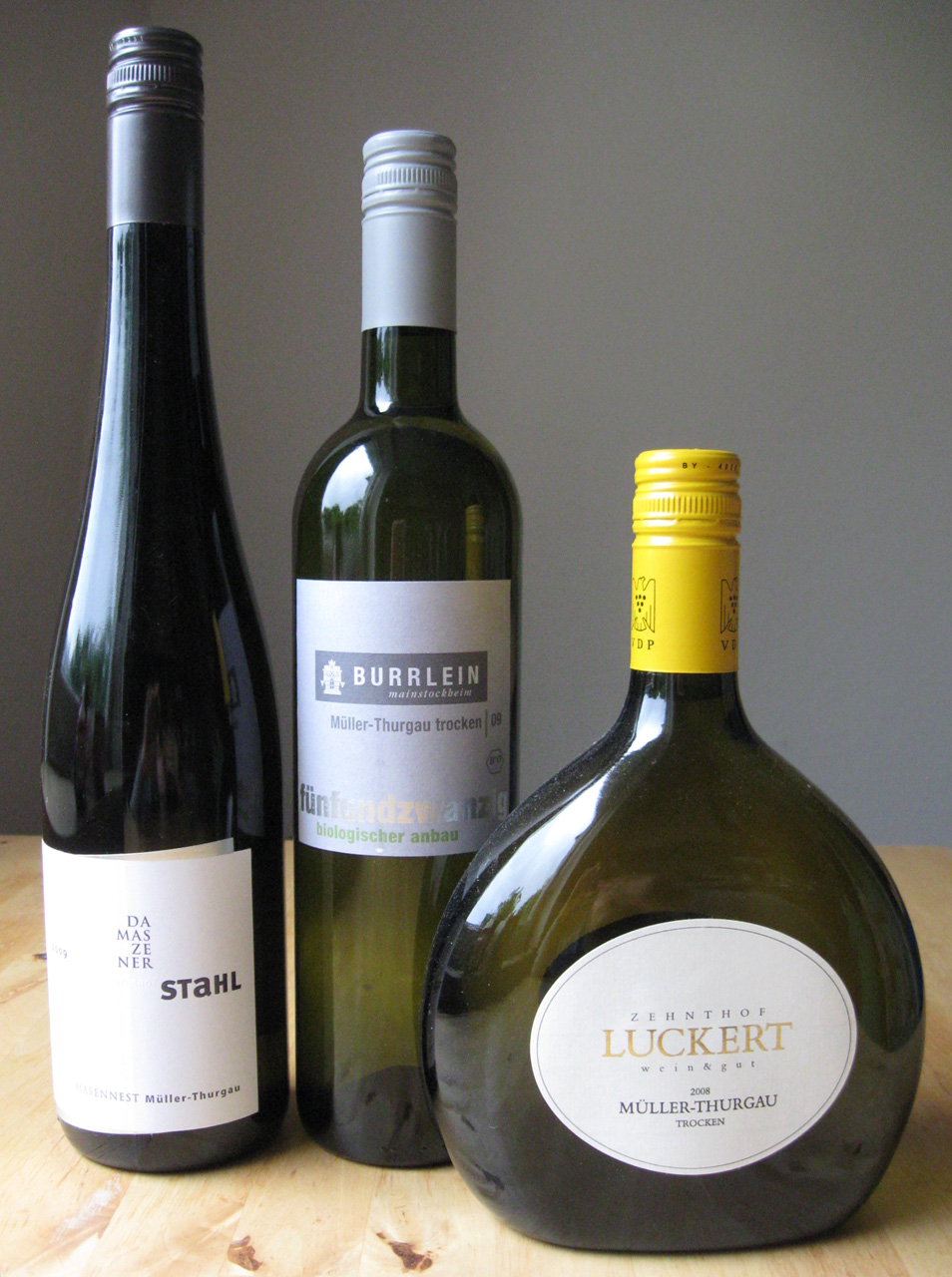What the **** is Müller-Thurgau? And is it ever any good? A Wine Rambler investigation
We have long found that, much as we give due reverence to king Riesling, the most august sovereign of German wine, those grapes in the second and third rank also deserve respect from time to time. Today, we bring you the one German grapes that has been further from the spotlight than any other, and yet is almost ubiquitous. And it all starts with the stern-faced gentleman below. Intrigued? Not exactly? Read on anyway, for a story of mishap and unexpected success, a mystery solved, some wines tasted, and a human bumblebee.

The man that became a grape
Let us first introduce the tragic hero of this story: Swiss botanist Dr. Hermann Müller-Thurgau (1850-1927). Müller-Thurgau spent over 20 years at what was then, and is now, Germany's foremost winemaking college in Geisenheim (Rheingau), researching grape varieties and how to hybridise them. His long-standing project was to create a grape that would deliver aromatics approaching those of Riesling, but ripen more reliably, and be ready for harvesting earlier in the year. When he took another post in his native Switzerland in 1891, the Geisenheimers sent him - keep that in mind, because it will play a big role - sent him vines to keep working on and finish his work. He did. In 1913, the first 100 of the new variety vines were brought back to Germany and christened in honour of their creator, though against his more modest wishes. A straightforward success story, it seemed. But something was wrong. Doubts and embarrassing questions started to be asked. Was everything about this child what it seemed to be?
From paternity row to paternity test
As in the human world, one parent was never in any doubt: Riesling. What the other grape was - and here's where it gets mildly interesting - Müller-Thurgau himself found he did not know. He knew what he had asked the Geisenheimers to send him, of course: Silvaner vines. But was that also what he had received? He had his doubts, and those grew as he reviewed his results. Something had gone terribly wrong. He fell out with his former partners, accusing them of getting their grapes mixed up - not something a researcher in ampelography will take lightly - and sending him the wrong vines. He was right. When the experiment was repeated and Riesling and Silvaner were newly hybridised, the results were, again and again, nothing like Müller Thurgau. Only in 1996, after several decades of first botanical, then genetic research, the missing parent grape was finally revealed to have been the somewhat obscure Madeleine Royal, closely related to the red Frühburgunder. This came too late to undo the synonyms for Müller-Thurgau still in use today, which had come up based on the Riesling x Silvaner fallacy, e.g. "Rivaner".
A success story
Admittedly, "Strangely named wine researcher creates new cross-bred variety. Details unclear - result doubtful" wouldn't make a great headline. Why bother to tell this story, then?

Firstly, because it is striking, to me at least, how little was known until fairly recently, and how much work is still being done, about what would seem to be the very basics of the what any grape variety actually is (the search for the closest European relative of Zinfandel would be another example). Secondly, and more importantly, this nondescript newcomer with the murky origins was Germany's most widely planted grape from the 1970s until the 1990s, and has only fairly recently been pushed from the lead by Riesling. It is, by a large margin, the world's most successful hybrid grape variety. Ironically, then, the botched grape turned out to have the exact qualities that Müller-Thurgau had hoped for in his original plan, and probably even ended up surpassing his expectations: It is not picky about soil or climate, easy to grow and handle, yields are reliably plentiful, and its taste is something that, it seems, many consumers can agree on in the lower price range and for everyday drinking. In other words, Germans do like it, though not as much as they used to.
Bring'em on, then
And that's where we wine snobs come in. Simplistically fruity, routinely overcropped, flabby and banal. That's the verdict from most critics as it stands. We decided to sample three wines that were well reviewed or that had already impressed us in the past, with two related aims: 1. Drink some goddamn Müller, and taste for ourselves what we are dealing with here, and 2. extract a little background from the wineries who sent us these bottles. All three are Franconian, although Müller-Thurgaus is grown in all german regions.  Let's start by having a look at the three bottles: Don't they just look like the comically mismatched three from some triple buddy movie? Actually, the utter confusion about what bottle shape is the right one for a Müller-Thurgau is a neat illustration of the awkward position the grape now occupies in the world of german wine. It's losing out to other grapes on a massive scale, but on the other hand we now see Müller-Thurgaus, MTs for short from here on, tentatively coming out that are doing well with critics. Is it that even the most banal grape is bound to get lucky sometimes or is it the great misunderstood, overcropped, underestimated grape that is just waiting to break through?
Let's start by having a look at the three bottles: Don't they just look like the comically mismatched three from some triple buddy movie? Actually, the utter confusion about what bottle shape is the right one for a Müller-Thurgau is a neat illustration of the awkward position the grape now occupies in the world of german wine. It's losing out to other grapes on a massive scale, but on the other hand we now see Müller-Thurgaus, MTs for short from here on, tentatively coming out that are doing well with critics. Is it that even the most banal grape is bound to get lucky sometimes or is it the great misunderstood, overcropped, underestimated grape that is just waiting to break through?
Enter the first contestant
First to come to the test, in the middle, sporting the Bordeaux bottle, is the MT that Winzerhof Burrlein has organically grown in Mainstockheim, some 15 miles east of Würzburg. I tried to press Klaus Bausewein, who patiently handled my questions for the winery, on the bottle shape issue: "It's very much an issue of each winery's marketing strategy. We found that the Bordeaux bottle is intuitively most appealing to consumers, so we use it for wines that are uncomplicated, fresh, and fun. Below that are the basic qualities and litre bottles, above that would be the "Franconian classics" in Bocksbeutel, and then the premium wines in burgundy bottles." Well, since we're talking marketing, how valuable are these different segments: Is it the basis of the quality pyramid that's actually making the money, while some premium wines add prestige, or is it the top shelf that drives sales? "Until the mid-eighties, we sold mostly litre-bottles and other fairly basic fare, in large quantities, to a fixed group of regular customers. Since then, we have stepped up quality significantly. A good deal of the old customers have stayed with us, though, and we want to offer them wines that are uncomplicated and don't break their wallets." This is exactly where MT comes in and holds its own. Stylistically, though, they have set their sights on a modernised version of the grape: "We want to show the grape's potential to develop a modern aromatic profile of lemon, apple, pineapple and the like, other than the spicy, but also dusty, musty, and somewhat dowdy MTs of old." With some success, we found: Straw-coloured, Burrlein's 2009 Mainstockheimer Hofstück Müller-Thurgau trocken (4,80 €) smells sweetly, and even somewhat exuberantly, of sweet apples and peaches, with some canned fruit salad and the faintest touch of ginger. Not a miracle of mineral depth, but so far, we're having fun. The same kind of in-your-face fruit reappears on the palate, and now there is even a hint of minerality. But still, there is more fruit than there is structure, with a finish that is herbally sweet, but also a little watery. A well-made wine with flattering fruit and some herbal character that won't blow anyone away - except 95 % of the world's white wines on the market for this kind of price.

The Burrlein winery, liking our plan to look into Müller-Thurgau, also sent us their other Müller-Thurgau from the popular "Frank und Frei" product range (5,50 €) to taste, which I actually preferred to the single-vineyard version, being lighter, but a little fresher and more drinkable. While both wines would held their own in many a blind tasting, I would not have stood a chance, frankly, of guessing what they were, or where they came from. A self-consciously modernist version of Müller-Thurgau is maybe not the ideal place to look for the grape's soul.
Secret? No secret!
If it does have a soul, there must be worse places to look for it than a few miles downriver, in the Luckert family's vineyards around the small town of Sulzfeld. Their MT from the Cyriakusberg vineyard (6 €) comes in a beautiful franconian Bocksbeutel, the only bottle that franconian wine should ever be in in my view, no matter what anyone's marketing department says. It gives us light straw colour, a smell of ripe apples, sliced raw cabbage turnip and maybe a little freshly cut grass. On the palate, mild acidity, again ripe apple fruit and an earthy, limestony kind of minerality. The power and relative depth of this much more traditional version of the grape are quite an achievement. What have they done to coax this kind of concentration and character out of the grapes? Wolfgang Luckert's first answer is a list of technical requirements- the benchmark data of dedicated wine growing and winemaking: "Vines aged 24 to 30 years, yields no higher than 55.000 litres per hectare, little or no botrytis, spontaneous fermentation in large wooden vats, wine left on the lees until the end of February, filling, done". The Wine Rambler, for one, prefers a Müller-Thurgau produced with this kind of care to an indifferently mass-produced Riesling. Are we as wine consumers, then, misguided to set too much store by the distinction between nobler grapes and those for mass production? Yes, says Luckert, and it is often the preconceived notions transported in wine journalism that keeps this distinction alive, but he also freely acknowledges that these are not entirely without a basis in fact: "After all, many wineries have done what they can to reinforce this negative perception for much too long." Is that not also because it's hard to say what a Müller-Thurgau should taste like, other than with Riesling or Silvaner, where every taster has a clear profile that he has come to expect? There's something to this as well, says Luckert. "But I do see a two general types of the variety. One, light, residually sweet, with a lot of carbonic acid, is, thankfully, on the decline. The other, ripe, creamy, terroir-driven up to a point, bigger-bodied, is what is on the rise." Hear, hear. voelker_wein, licensed CC Attribution-NonCommercial 2.0 Generic" src="/sites/default/files/images/sulzfeld_cyriakusberg.jpg" width="500" height="333" align="center" class="inline inline-center" /> The Luckerts' winery is one of the rising stars in Franken, and the care they devote even - see how preconceived notions creep in when I say "even"? - to their Müller-Thurgau speaks to their dedication to quality. But they certainly do not stake their reputation on Müller-Thurgau, or make it a signature grape for the winery. Who, after all, would be crazy enough to do that?
The human bumblebee
Well, meet Christian Stahl. His vineyards are in the Tauber valley, where Franconia borders on Württemberg. He makes MTs from basic to Spätlese-like qualities, from different single vineyards, and they are not tucked away in a hidden corner of the price list, but squarely at the center of his portfolio. And he prices them accordingly, too. The single-vineyard Müller Thurgau from Stahl's nicely named Hasennest ("hare's nest") vineyard (8,50 €) now before us smells of hay, dried herbs, apples and what I always think of as chalk. Yeast and carbonic acid still dominate the palate a bit too much at this point, but behind that white vegetables (celery root, cabbage turnip, radish), beeswax and herbs are lurking - and stay for the finish, which is quite long. A wine with some character, a bit more acidic grip than Müller-Thurgau usually brings, and great vegetal bite, that we have probably opened too soon. Give it a bit of air and a bit more time, I feel it may become more than just enjoyable. 

The conclusion
...will be quick (and somewhat banal), because if you have stayed with us until this point, we have already stolen more of your online time than is perhaps justifiable. It was fun to find out about Müller-Thurgau, it was even more fun to drink them (which we'll continue to do from time to time), but ultimately, what we found is what we kind of knew already: There isn't a grape so lowly on god's green earth that it cannot be made into a wine with a message and a story. Those stories are what we should be talking about.
